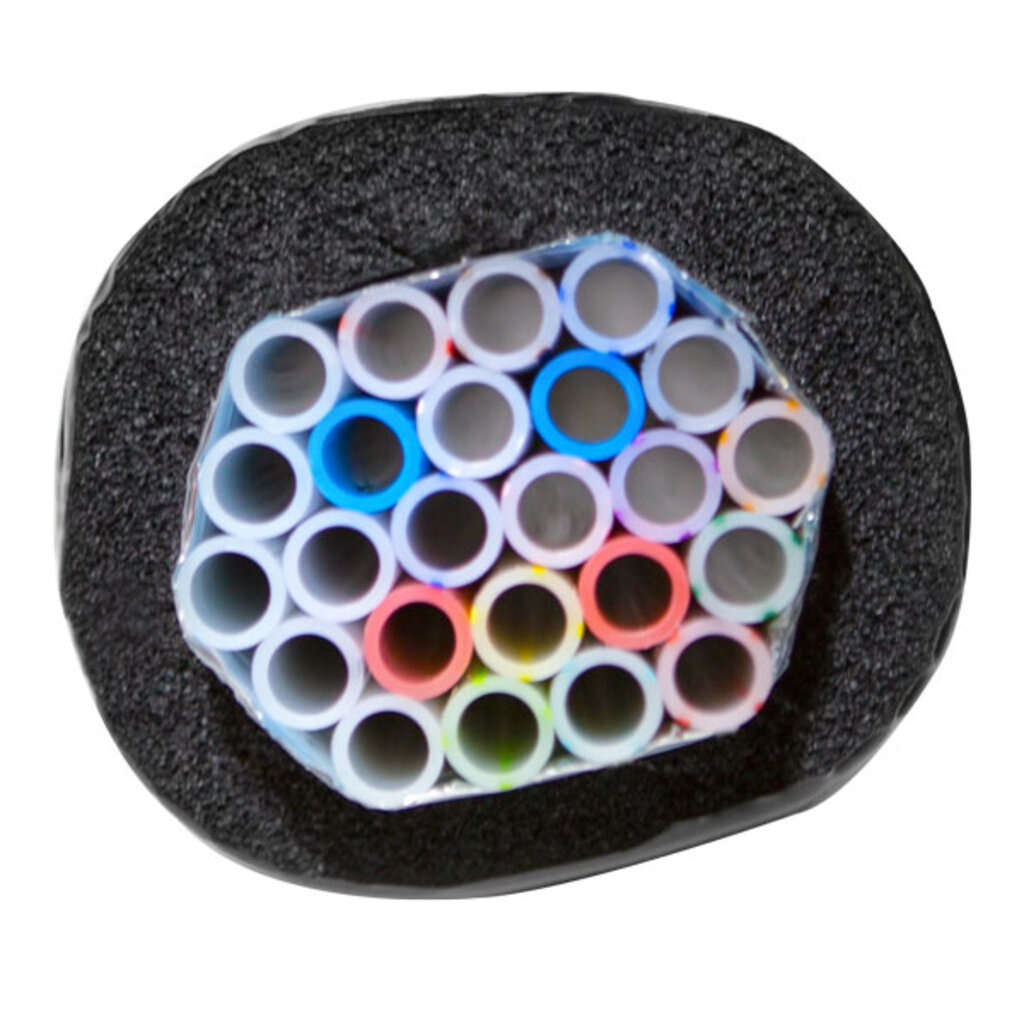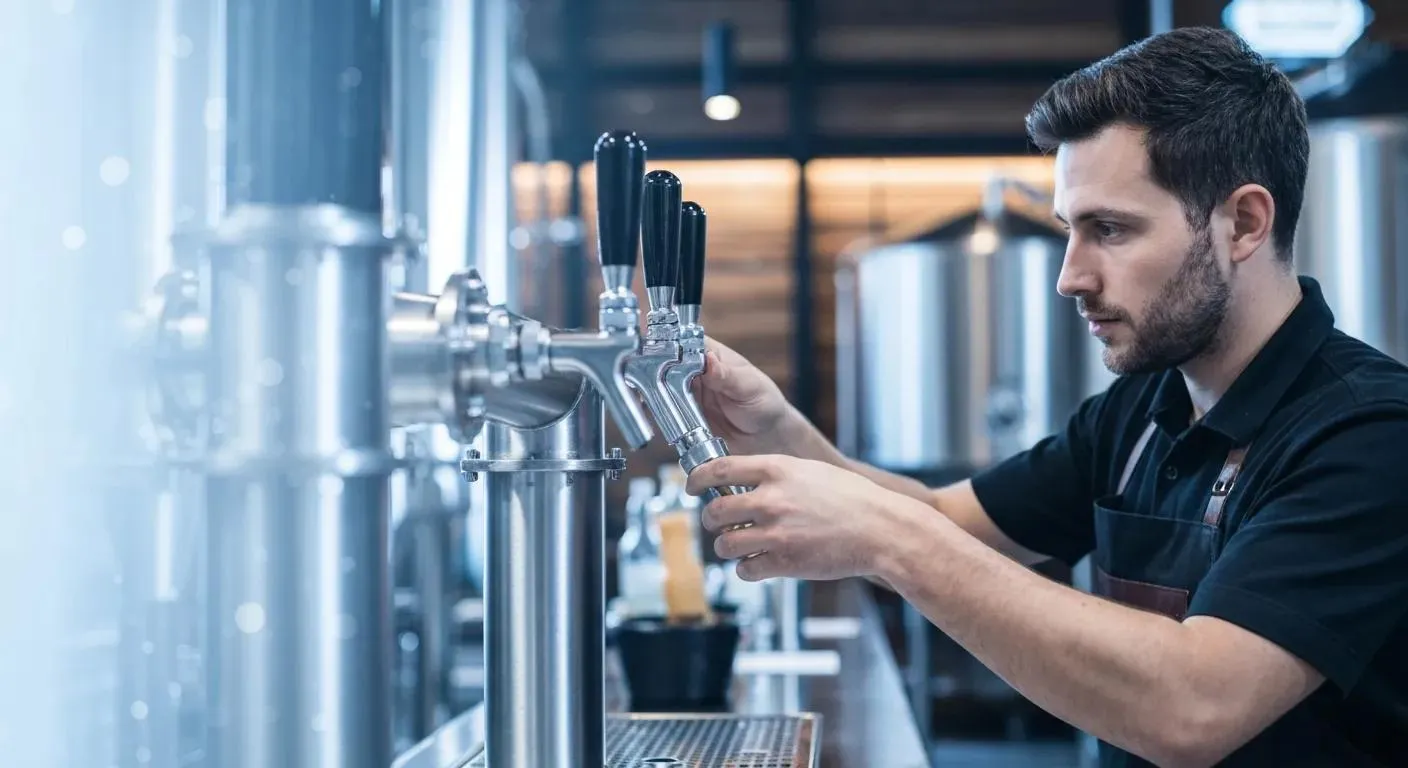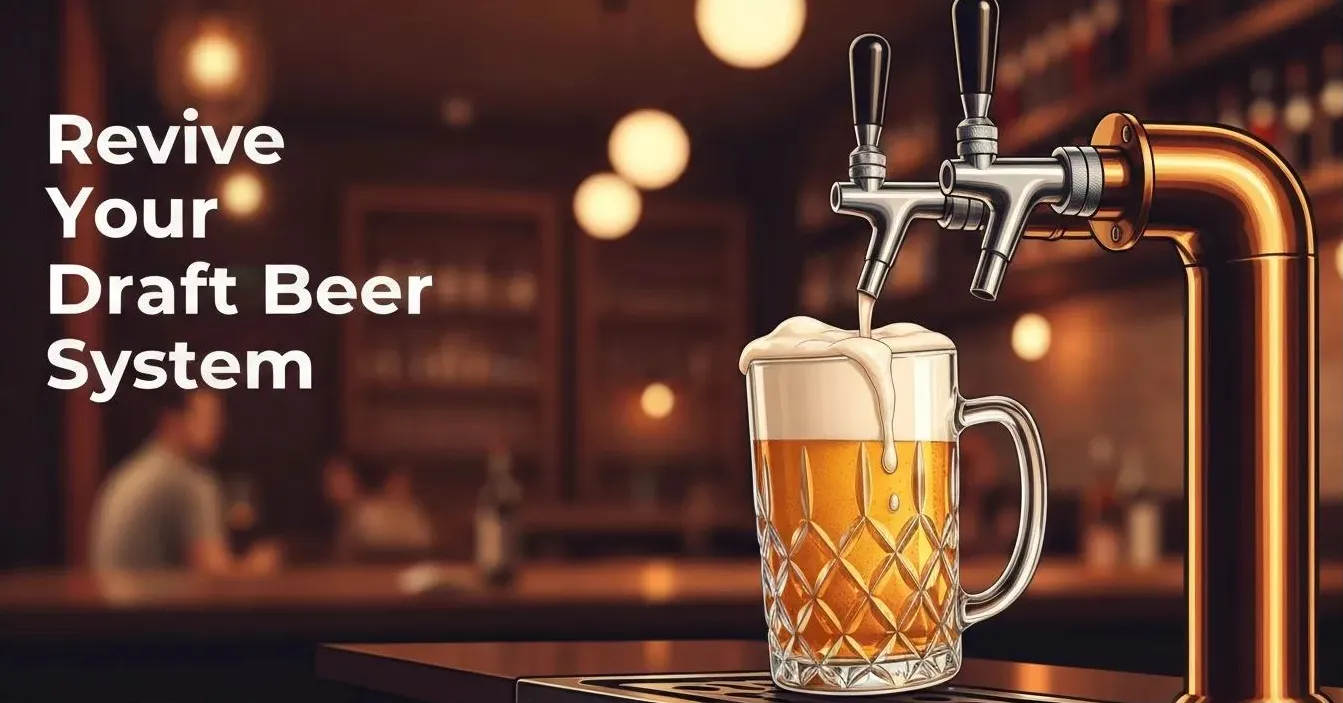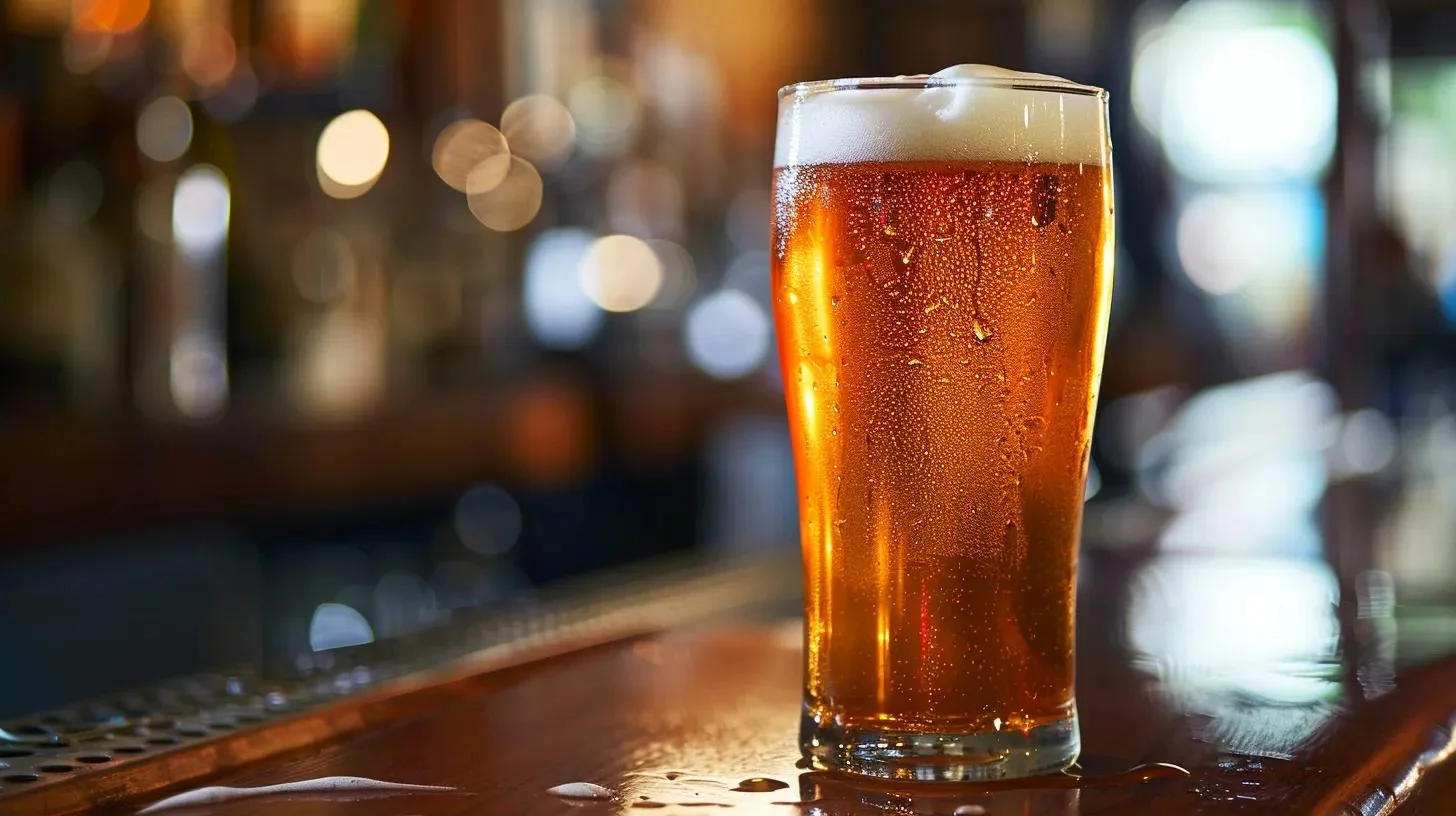Chiller Glycol for Draft Beer Systems: Ensuring Optimal Temperature Control

In the world of draft beer systems, temperature control is paramount for ensuring the quality and taste of the beer served. A glycol chiller system provides a reliable solution for maintaining the optimal temperature of beer from keg to tap, especially in long-draw beer dispensing systems. It uses a food-grade antifreeze known as propylene glycol, mixed with water, to create a cooled glycol solution that circulates through lines adjacent to the beer lines. The efficacy of this system is evident in bars, restaurants, and breweries, where consistent draft beer cooling is essential.
Understanding the components and operation of a glycol beer chilling system is critical for effective implementation. The chiller, typically a compact refrigeration unit, is designed to meet the specific requirements of maintaining beer at its ideal temperature during service. Proper installation and regular maintenance are crucial factors that affect the performance of glycol chillers and ultimately, the quality of the draft beer experience for customers.

Key Takeaways
- Glycol chillers are integral for maintaining draft beer quality through optimal temperature control.
- Propylene glycol, a non-toxic antifreeze, is essential in these systems for cooling beer lines.
- Regular maintenance of glycol beer systems ensures efficient and consistent performance.
Fundamentals of Glycol Chillers
In the context of draft beer dispensing, ethylene glycol chillers are vital for maintaining the optimal temperature of beer as it travels from kegs to taps, particularly over long distances. These systems employ propylene glycol, a food-grade antifreeze, because of its ability to lower the freezing point of the fluid, preventing the beer lines from freezing.

Glycol beer chillers operate on a simple principle:
- Glycol, the cooling agent, cools the beer lines.
- The chiller unit comprises a reservoir, a refrigeration system, and a pump.
- Propylene glycol circulates through a closed-loop system, absorbing heat from the beer lines.
The use of propylene glycol is critical because it is non-toxic and safe for use in both food processing and beverage applications, unlike the traditional antifreeze typically found in automotive applications. This food-grade antifreeze maintains a consistent temperature, ensuring the beer remains at the desired temperature for consumption.
Glycol cooling systems often use r134a refrigerant, which is environmentally friendly and effective in heat absorption. These characteristics make this refrigerant a suitable choice for glycol beer systems, where maintaining lower temperatures is essential for quality draft beer.
Lastly, these systems are versatile, supporting various setup configurations to suit the needs of establishments, exemplifying the importance of understanding glycol’s role in effectively maintaining the quality of draft beer through precise temperature control.
Components of Glycol Beer Systems
To maintain optimal temperatures for draft beer systems, glycol beer systems leverage a few critical components. Each part plays a unique role in preserving the beer's quality and heat transfer from keg to glass.
Glycol Power Packs
The glycol power pack functions as the system's workhorse, comprising a motor, a compressor, and a glycol reservoir. It's responsible for chilling and circulating glycol solution throughout the system. The motor powers the compressor, which cools the glycol before it is pumped through the system.
Cooling Lines and Trunk Lines
Cooling lines and trunk lines are essential for the stable transmission of temperature. Trunk industrial cooling lines carry the chilled glycol and beer parallelly from the walk-in cooler to the dispensing tower. These lines are typically insulated to prevent temperature fluctuations.

Glycol Reservoir
The glycol reservoir is a part of the power pack, holding the glycol solution mixture. It is crucial for maintaining a continuous supply of the glycol water mixture, which is then circulated by pumps through the glycol lines to regulate the system's temperature.
Compressor and Condenser
The compressor and condenser are at the heart of the cooling system. The compressor raises the pressure and temperature of the refrigerant, which is then cooled in the condenser. This cooling process is vital for chilling the glycol solution used to keep the beer at the perfect serving temperature.
Installation and Setup
The installation and setup of a glycol cooling system for a draft beer setup are critical for optimal performance and efficiency. Each component from the draft beer tower to the keg coupling must be installed with precision to maintain the beer's intended temperature from keg to tap.
Draft Beer Tower Installation
The draft beer tower should be mounted firmly, ensuring it aligns correctly with the countertop and the bar's blueprint. It typically comprises several faucets, which must be securely attached for a stable pour. When installing the beer tower, one should take care to avoid damaging any pre-installed beer lines as this could affect the overall system efficiency.

Glycol Line Configuration
The glycol trunk line runs alongside the beer lines within an insulated bundle known as a trunkline. Proper configuration involves ensuring a continuous loop from the chiller to the draft tower, which often requires specific measurements for both distance and insulation thickness to keep the beer chilled as it travels. These glycol lines must remain free from kinks or sharp bends to allow for consistent flow.
- Trunkline Setup:
- Distance from chiller to tower
- Insulation rating
- Avoid kinks or sharp bends
Keg Coupling and Connections
Finally, keg coupler installation is the last major step, where one securely attaches the coupler to each keg for a reliable seal and connection. The keg coupler serves as the link between the keg and the beer lines, and a proper seal ensures carbonation and freshness are preserved. Routine checks of all connections, looking for leaks or wear, are important to maintain the system’s reliability.

- Connecting the Coupler:
- Attach securely to the keg
- Check for a proper seal
- Regular maintenance checks for leaks
Temperature Control and Maintenance
Proper temperature control and vigilant maintenance are crucial for the efficiency of a glycol cooling system in draft beer dispensing. These factors ensure that beer is served at its ideal temperature, preserving its flavor and quality.

Thermostat Settings
- Optimal Temperature: The thermostat should be set between 26-28°F for alcoholic beverages to prevent freezing and maintain the ideal serving temperature. For non-alcoholic beverages, a setting slightly warmer is suggested to prevent freezing within the lines.
- Adjustability: Modern glycol systems come with a digital thermostat, allowing easy monitoring and adjustments to maintain the correct temperature for different types of beer.

Regular Cleaning and Upkeep
- Importance: Routine maintenance is paramount for the glycol cooling system's longevity and consistent performance.
- Cleaning Schedule: Regular cleaning prevents the buildup of bacteria and yeast, which can affect the taste of dispensed beer and clog the lines.
- Glycol Mixture: Ensuring that the glycol is mixed properly with water is essential. The recommended propylene glycol to water ratio is between 35%-40%, depending on specific system requirements.
Draft Beer Systems in Hospitality
Draft beer systems are critical components in the hospitality industry, providing efficient service and quality beer to patrons. With the right installation, bars, and restaurants can ensure optimum temperature control and superior taste in every pour.

Bar and Restaurant Applications
Bars and restaurants frequently rely on sophisticated draft beer systems to serve a high volume of patrons smoothly and efficiently. The use of glycol cooling systems enables these venues to maintain the ideal serving temperature of beer from keg to tap. This setup is crucial, as it preserves the beer's flavor and carbonation, enhancing the customer's drinking experience.

Smaller establishments or those specializing in craft beers might look at kegerators. These beer coolers are designed for direct draw systems, where the distance between the beer keg and the dispensing tap is minimal, fitting the requirements of a compact space. In contrast, larger venues, such as sports bars or breweries that serve a variety of beers across a greater space, necessitate a more extensive draft beer system with long-draw capabilities, where glycol-cooled lines run from a remote cooler to the taps.
System Specifications for Different Venues
Selecting the proper draft beer system hinges on the venue's size, layout, and customer demand. Tailoring the system to meet these criteria ensures efficient operation and minimal beer wastage.
- Small Venues: Short-draw direct systems suffice, typically requiring fewer taps and simple cooling setups.

- Large Venues / Breweries: Require complex long-draw glycol systems with multiple lines. Specifications include:
- Food-grade propylene glycol for efficient cooling.
- Insulated beer lines to prevent temperature fluctuations.
- Capacity for multiple kegs to offer a wide beer selection.

For the food industry, specifically within larger restaurants or brewery taprooms, system specifications might also encompass:
- High-capacity beer coolers to keep multiple kegs at once.
- Customizable glycol chiller units to accommodate increased length in beer line runs, encountering the challenge of maintaining beer temperature across vast areas.
A well-designed draft beer system is an asset to the hospitality industry, as it serves as an intersection of functionality and customer satisfaction. Whether it is in a cozy local bar or a sprawling brewery, these systems are at the heart of delivering quality draft beer to the consumer.
Technical Aspects of Glycol Systems
Glycol systems are engineered to provide effective temperature control for draft beer dispensing, utilizing a cooling agent to transfer heat and maintain optimal beer temperatures from keg to faucet.
Cooling Capacity and Efficiency
Cooling capacity is determined by the system’s ability to reduce the temperature of beer within a glycol solution reservoir lower freezing point and maintain it at the desired level throughout the cooling lines. Efficiency is gauged by the system's ability to manage ambient temperatures and support a consistent temperature drop from the keg to the tap. A well-designed system should minimize temperature fluctuations to preserve the quality and taste of the beer.
- Key Factors Impacting Cooling Capacity:
- Volume of the glycol solution reservoir
- Length and insulation of the cooling lines
- Initial temperature of the draft beer
Power Pack Performance Metrics
The power pack is a critical component, serving as the heart of a glycol cooling system. Performance metrics for these units include their output capacity and how well they can maintain the ratio of glycol at low temperatures in various environments.
- Notable Performance Metrics:
- Rate of glycol chilled per hour (measured in BTUs)
- Efficiency at different ambient temperatures
- System's ability to prevent freeze-ups
The technical design should ensure the power pack is capable of sustaining low enough temperatures to counteract any heat pick-up in the cooling lines without overworking, which can result in energy inefficiencies or system failure.

Advanced Considerations for Glycol Beer Chillers
When optimizing glycol beer chillers, one must consider both the design of custom solutions tailored to specific needs and keeping abreast of industry innovations. These advanced considerations determine the efficiency and efficacy of maintaining the ideal beer temperature through sophisticated glycol systems.
Designing Custom Glycol Solutions
Bespoke glycol solutions cater to unique operational requirements, factoring in variables such as the capacity, layout, and distance from keg to tap. Professional setups, like the Komos Draftmaster, integrate a strategic blend of glycol and water, known as a glycol bath, within their chilling units. Designing these systems requires precise calculations to ensure a consistent cold beer output, regardless of distance.
Key Considerations for Custom Solutions:
- Glycol to water ratio: Typically, 35% - 40% for optimal freezing point depression
- Chiller capacity: Scaled to meet demand without energy wastage
- Insulation: Superior materials to conserve cooling energy
Industry Innovations and Trends
The evolution of beer glycol chillers sees a continuous push for eco-friendly and energy-efficient technologies. Glycol beer chiller systems are increasingly incorporating advanced materials and intelligent controls that respond to changes in demand, minimizing power consumption.
Notable Innovations:
- Smart Cooling: Systems that adapt in real-time to usage patterns
- Improved Insulation: Trunk lines with advanced insulation to prevent temperature fluctuations
Ensuring that a glycol system effectively delivers cold beer involves alignment with these considerations. From customizing solutions to integrating the latest enhancements, maintaining the cold chain from keg to cup is complex and requires a hands-on approach that's both precise and informed.
Troubleshooting Common Issues
When managing a draft beer system, maintaining a consistent temperature and foam control is fundamental for optimal performance. Proper handling of glycol leaks and system blockages is also crucial to prevent interruptions in service.
Addressing Foam and Temperature Fluctuations
Temperature and foam are intricately connected in a draft beer system; proper management is key to providing an ideal beverage experience. To address excessive foam, it's important to verify that the beer cooler temperature is within the ideal range of 36°F to 38°F. Any deviation can result in foam issues. Regular maintenance of the cooling lines and walk-in cooler is advised to ensure consistent temperatures are maintained.
In addition to temperature checks, one should examine the beer lines for any signs of wear or tear that could affect pressure levels and result in foaming. The trunk lines should also be inspected for cleanliness and integrity as blockages and contamination can disrupt beer flow and quality.
Handling Glycol Leaks and System Blockages
Glycol leaks can significantly impact the performance of a draft beer system and need immediate attention. One should routinely inspect the glycol cooling lines for corrosion or any indications of a leak. In case of a glycol leak, the damaged sections need to be replaced promptly to prevent system inefficiency or further damage.
In the event of system blockages, regular monitoring and cleaning of the trunk lines are essential. A regular cleaning schedule should be in place to prevent buildup that could lead to blockages. If blockages do occur, they must be cleared to ensure smooth and hygienic beer delivery. Implementing these proactive steps as part of a thorough maintenance routine helps in preventing and troubleshooting common draft beer system issues.
Summary
Glycol chillers are a fundamental component of long-draw draft beer systems. They play a critical role in maintaining the optimal temperature of the beer from keg to tap, even over long distances. Propylene glycol, a food-grade antifreeze, is used in these chillers.
Typically, a glycol chiller is a compact refrigeration unit that circulates a mixture of glycol and water to keep the beer lines cold. The size of the chiller's compressor and reservoir will depend on the demands of the beer dispensing system – with larger systems requiring more powerful compressors and bigger reservoirs to handle longer beer runs effectively.
The operation of glycol chillers involves:
- A reservoir filled with a glycol solution.
- A cooling system that lowers the temperature of the solution.
- A pump that circulates the chilled glycol through insulated beer lines.
Establishments need to ensure that their glycol levels and mixture ratios are properly maintained, with recommended temperatures typically set between 26-28 degrees Fahrenheit for alcoholic beverages. Properly mixed glycol ensures the efficacy of the system and prevents beer from freezing in the lines or not being cooled adequately.
Different types of glycol chillers are suited to various system sizes, ranging from ⅙ hp to 1.5 hp, with reservoir capacities from 5 to 15 gallons. These units can be scaled to accommodate beer runs of just a few feet to over 500 feet, illustrating their flexibility and utility in draft beer dispensing systems.
For more information or questions please reach out to us at Renny's Draft Solutions. You can also read up on more draft beer dispensing information with our Beer Education Blog.



